Luxor Temple: The Must-See Sight in Egypt
Prepare to journey through time as we explore the remarkable Luxor Temple in Egypt.
With its rich history and stunning architectural beauty, Luxor Temple is a must-see for any traveller visiting this ancient land. Step into the world of pharaohs and gods as you wander through the grand columns and intricate carvings adorn the temple. Discover the stories of ancient Egypt while marvelling at the craftsmanship and power that once resonated within these sacred walls. Join us as we delve into Luxor Temple's wonders and uncover this incredible landmark's secrets.
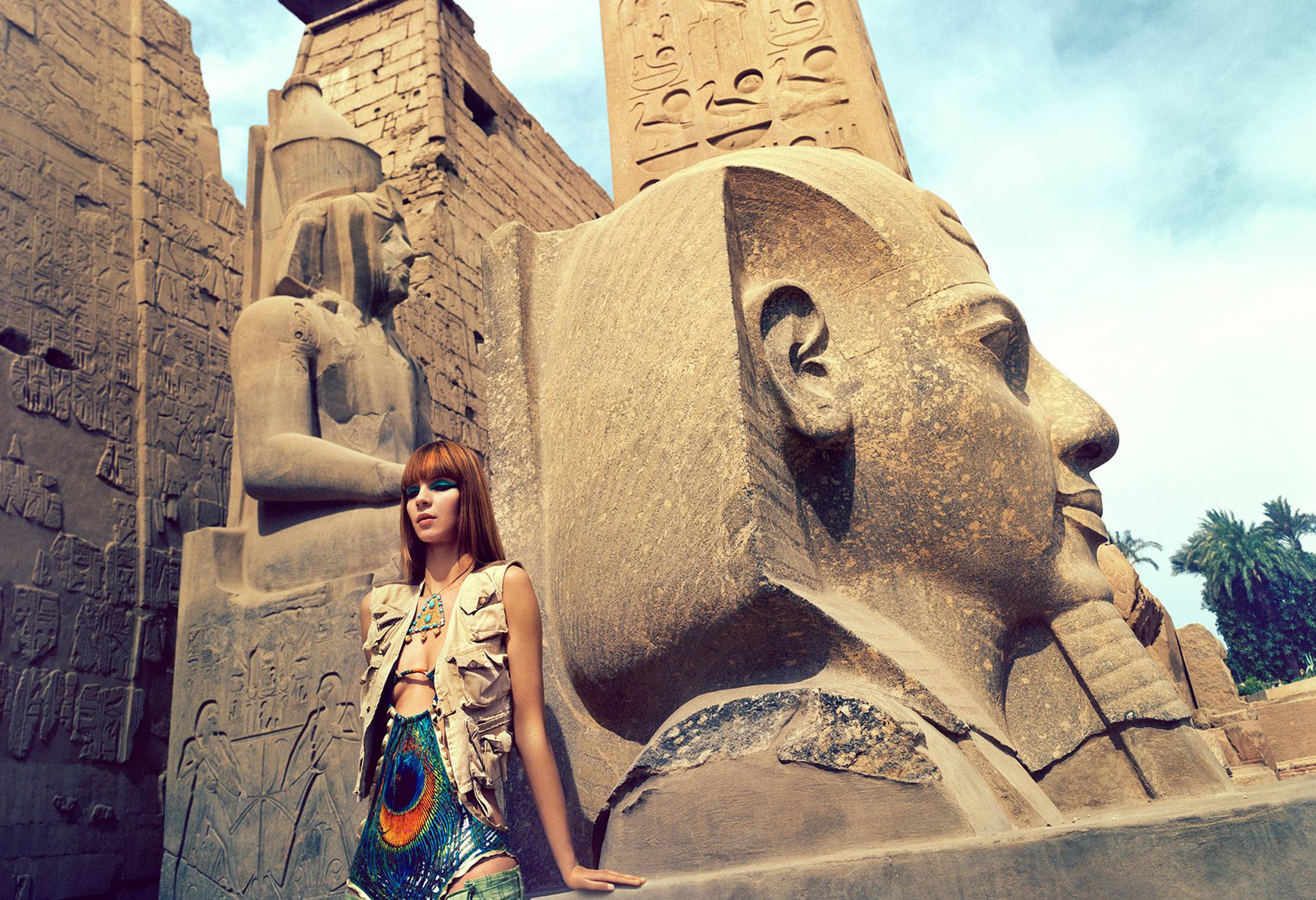
Overview of Luxor Temple as a must-see sight in Egypt
Luxor Temple, located on the east bank of the Nile River in Luxor, is a must-see in Egypt. This ancient temple dates back to the New Kingdom period and is one of the best-preserved religious structures in the country. Known as Ipet Resyt, meaning "the southern sanctuary," Luxor Temple was dedicated to the Theban triad of Amun, Mut, and Khonsu.
The temple was an important religious and ceremonial site, hosting various rituals and festivals yearly. It's grandeur and architectural beauty make it a standout attraction in Luxor, attracting tourists and history enthusiasts worldwide.
Luxor Temple is famous for its unique features, including the imposing gateway pylon, colossal statues, intricate reliefs, and the Avenue of Sphinxes, which once linked it to the Karnak Temple Complex. The temple also houses the Obelisk of Ramses II, one of the ancient world's largest obelisks.
A visit to Luxor Temple offers a fascinating glimpse into the ancient Egyptian civilization and its religious practices. Exploring the temple's wonders, admiring the detailed carvings, and strolling along the avenue of Sphinxes is a truly awe-inspiring experience. Don't miss the opportunity to include Luxor Temple in your Egypt itinerary for an unforgettable journey through history.
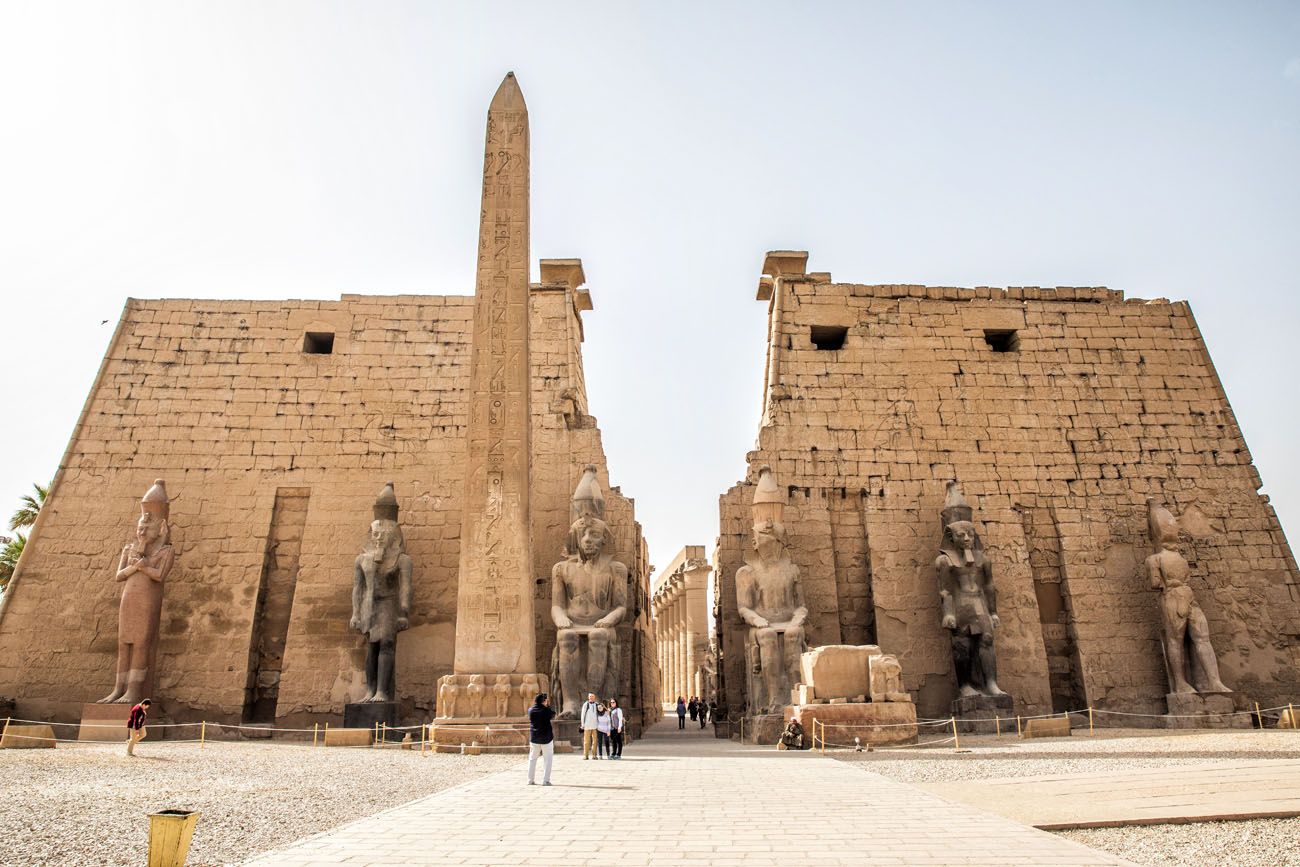
Importance and historical significance of Luxor Temple
Luxor Temple, located on the east bank of the Nile River in the city of Luxor, is one of Egypt's most important and historically significant ancient sites. Built during the New Kingdom period, the temple served as Thebes's religious and ceremonial centre (now Luxor). It was dedicated to the worship of Amun-Ra, the sun god, and other deities.
The historical significance of Luxor Temple lies in its association with the political and religious power of ancient Egypt. It was considered a symbolic representation of the Amun-Ra cult, paramount during the New Kingdom. The temple was intricately connected to the pharaohs, who were viewed as the divine intermediaries between the gods and the people. Pharaohs would connect with the gods by visiting Luxor Temple and reaffirming their divine right to rule.
Over the centuries, Luxor Temple underwent various changes and additions by different pharaohs, reflecting ancient Egypt's changing religious and political climate. Notable additions include the Obelisk of Ramses II and the Avenue of Sphinxes, which created a grand entrance to the temple.
Today, Luxor Temple stands as a remarkable testament to ancient Egypt's architectural and artistic achievements and offers visitors a glimpse into its rich history and culture.

History of Luxor Temple
Origins and Construction of Luxor Temple
The Luxor Temple, located on the east bank of the Nile River in the ancient city of Thebes (modern-day Luxor), is a magnificent structure that dates back to the New Kingdom period of ancient Egypt. The temple was built primarily during the reigns of Amenhotep III and Ramesses II, although it underwent several expansions and additions by subsequent pharaohs.
Both religious and political motivations influenced the construction of the Luxor Temple. The temple was dedicated to the Theban triad of Amun, Mut, and Khonsu, who was considered the patron deities of Thebes. It was built as a place of worship and to establish the reign of the pharaoh as divinely ordained. The grandeur and scale of Luxor Temple aimed to demonstrate the power and authority of the pharaohs.
The temple features an impressive courtyard, a hypostyle hall with massive columns, chapels dedicated to various gods and goddesses, and a sanctuary at its rear. The temple walls are adorned with intricate reliefs and carvings depicting scenes from ancient Egyptian mythology and religious rituals.
The construction of the Luxor Temple is a testament to the advanced architectural skills and artistic achievements of ancient Egypt. It's grandeur and historical significance make it a must-see sight for travellers visiting Egypt.

Pharaohs who contributed to the temple's development
The construction and development of the Luxor Temple spanned several centuries and involved multiple pharaohs who sought to leave their mark on this iconic site. Among the pharaohs who contributed to the temple's development are:
-
Amenhotep III: The temple was initially built during the reign of Amenhotep III, who dedicated it to the divine birth of Amun-Ra, the king of gods.
-
Ramses II: Ramses II, one of the most famous pharaohs of ancient Egypt, made significant additions to Luxor Temple. He erected colossal statues of himself at the temple's entrance and built the famous Avenue of Sphinxes, a long pathway lined with sphinx statues connecting Luxor Temple to Karnak Temple.
-
Amenhotep IV (Akhenaten): During his controversial reign, Akhenaten sought to establish a monotheistic religion centred around the worship of Aten, the sun god. He made changes to Luxor Temple to reflect this new religious belief.
-
Tutankhamun: Although his reign was relatively short, Tutankhamun tried restoring the temple to its former glory and reintroducing traditional religious practices.
These pharaohs, among others, left their architectural and artistic marks on Luxor Temple, ensuring its significance as a must-see sight in Egypt and a testament to the ancient Egyptians' belief system and cultural heritage.
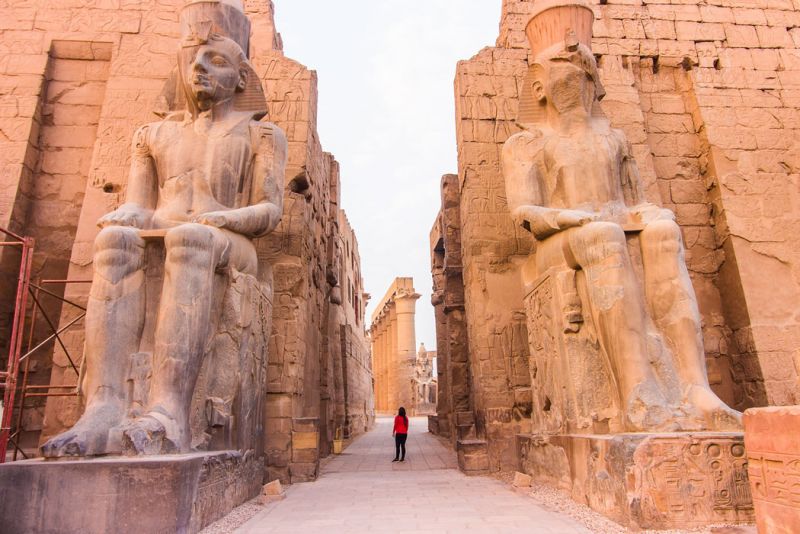
Changes and additions made to the temple over time
Luxor Temple has undergone several changes and additions throughout its long history that have contributed to its current grandeur. The temple was initially built during the New Kingdom period, under the reign of Pharaoh Amenhotep III, but subsequent rulers added their touches to the structure. One of the most significant additions was made by Ramses II, who constructed a colossal statue of himself and two obelisks at the entrance. One of these obelisks, known as the Obelisk of Ramses II, still stands today, while the other was moved to the Place de la Concorde in Paris.
Over time, Luxor Temple faced decline and was covered by sand and debris. It was not until the 19th century that extensive restoration efforts were undertaken, revealing the grandeur and beauty of the temple once again. The Avenue of Sphinxes, a long avenue flanked by sphinx statues, was also extended during this period, further enhancing the magnificence of the temple complex.
Today, visitors to Luxor Temple can see the layers of history through the various architectural styles and inscriptions. From the original construction by Amenhotep III to the additions made by Ramses II and subsequent restoration efforts, Luxor Temple stands as a testament to the enduring legacy of ancient Egyptian civilization.

Architecture and Design of Luxor Temple
Overview of the Layout and Structure of Luxor Temple
Luxor Temple is a magnificent historic site located on the east bank of the Nile River in Luxor, Egypt. It is one of the must-see sights in Egypt due to its architectural grandeur and rich historical significance. The temple is dedicated to the Egyptian gods Amun, Mut, and Khonsu and was primarily used for religious ceremonies and rituals.
The layout of Luxor Temple follows the traditional Egyptian temple design, featuring a large courtyard, a hypostyle hall, and a sanctuary. The entrance to the temple is marked by a colossal pylon, a massive gateway adorned with intricate carvings and hieroglyphs. Visitors pass through the pylon and enter a spacious courtyard surrounded by towering columns.
The hypostyle hall, with its rows of massive columns, is one of the most impressive features of the temple. These columns are intricately decorated with delicate carvings depicting scenes from ancient Egyptian mythology and history. At the rear of the temple complex lies the sanctuary, which housed the sacred statues of the gods to whom the temple was dedicated.
One of the most notable features of Luxor Temple is the Avenue of Sphinxes, a long procession of sphinx statues that once connected it to Karnak Temple. Additionally, the Obelisk of Ramses II stands proudly in the temple complex, symbolizing the pharaoh's power and authority.
Visiting Luxor Temple allows travellers to immerse themselves in ancient Egypt's rich history and fascinating culture. The temple's grand architecture and intricate carvings provide a glimpse into the religious and ceremonial life of the ancient Egyptians. It is highly recommended to explore this mesmerizing site and learn about its importance in Egyptian history.

Description of the main features and elements of the temple
Luxor Temple is a magnificent structure showcasing ancient Egyptian architecture's grandeur. Its massive columns, intricate carvings, and impressive statues characterise it. Some of the main features and elements of the temple include:
-
Hypostyle Hall: This hall has 74 enormous columns, each adorned with intricate hieroglyphic carvings. The columns create a sense of awe and majesty as visitors walk through the hall.
-
Obelisk of Ramses II: Standing at an impressive height, the obelisk is a remarkable sight. Carved from a single block of red granite, it is covered with inscriptions honouring various gods and pharaohs.
-
Birth Room: This small chapel features carvings depicting the birth of King Amenhotep III and his divine conception. The detailed and well-preserved scenes offer a glimpse into ancient Egypt's religious beliefs and royal lineage.
-
Sacred Lake: Located behind the temple, the Sacred Lake was used for purification rituals by the priests. Today, it serves as a serene and picturesque area within the temple complex.
-
Colonnade: The colonnade is a row of statues and columns leading to the temple's entrance. The statues depict pharaohs and gods, creating an impressive approach to the main temple structure.
Visiting Luxor Temple is a truly breathtaking experience, allowing visitors to immerse themselves in ancient Egypt's rich history and architectural wonders.

Significance of the Avenue of Sphinxes and the Obelisk of Ramses II
The Avenue of Sphinxes and the Obelisk of Ramses II are two of the most significant features of Luxor Temple.
The Avenue of Sphinxes is an impressive procession of sphinx statues that once connected the Luxor Temple to the Karnak Temple, spanning nearly 3 kilometres. The avenue was used for religious processions and ceremonies, and its alignment with the Nile River was believed to be significant to the ancient Egyptians, symbolizing the connection between the human and divine realms. Today, only a small portion of the avenue remains, but it still offers visitors a glimpse into the grandeur of ancient Egypt's religious rituals.
The Obelisk of Ramses II is another iconic feature of Luxor Temple. Located in the courtyard of the temple, this massive obelisk stands over 25 meters tall and is intricately decorated with hieroglyphic inscriptions. The obelisk was originally part of a pair, the other one having been moved to the Place de la Concorde in Paris. The obelisk is dedicated to the god Amun-Ra and serves as a testament to Ramses II's power and devotion to the gods.
These two features highlight the rich religious and ceremonial significance of Luxor Temple and provide visitors with a tangible connection to the ancient Egyptian civilization.

Sacred and Ritualistic Aspects of Luxor Temple
Role of Luxor Temple in the Religious and ceremonial life of Ancient Egyptians
Luxor Temple was significant in ancient Egyptians' religious and ceremonial life. Dedicated primarily to the Theban Triad, consisting of the gods Amun, Mut, and Khonsu, the temple served as a place of worship and ritualistic offerings. The temple was believed to connect the human world with the divine realm, serving as a conduit for communication and interaction with the gods.
The rituals and worship at Luxor Temple revolved around Amun, considered the chief deity of Thebes and the king of the gods. The pharaohs would perform ceremonial acts to honour Amun and seek his blessings. The rituals included food, drink, incense offerings, and elaborate processions. The temple was also a site for purification ceremonies and sacred festivals, where the entire community would come together to celebrate and participate in religious rites.
In addition, Luxor Temple served as a symbolic representation of the divine kingship of the pharaohs. The architecture and layout of the temple were designed to reflect ancient Egyptian beliefs and cosmology. The central axis of the temple aligned with important celestial bodies, emphasizing the connection between the gods, the pharaoh, and the universe.
The Avenue of Sphinxes leading to the temple entrance and the colossal Obelisk of Ramses II were key elements of the religious symbolism. The avenue was believed to represent the path the god Amun took during his annual procession, while the obelisk served as a marker and symbol of power.
Visiting Luxor Temple offers a unique opportunity to witness the grandeur and depth of ancient Egyptian religious practices, providing insight into their beliefs and customs. Exploring the temple and learning about its historical and religious significance is necessary for travellers interested in ancient Egyptian culture and history.
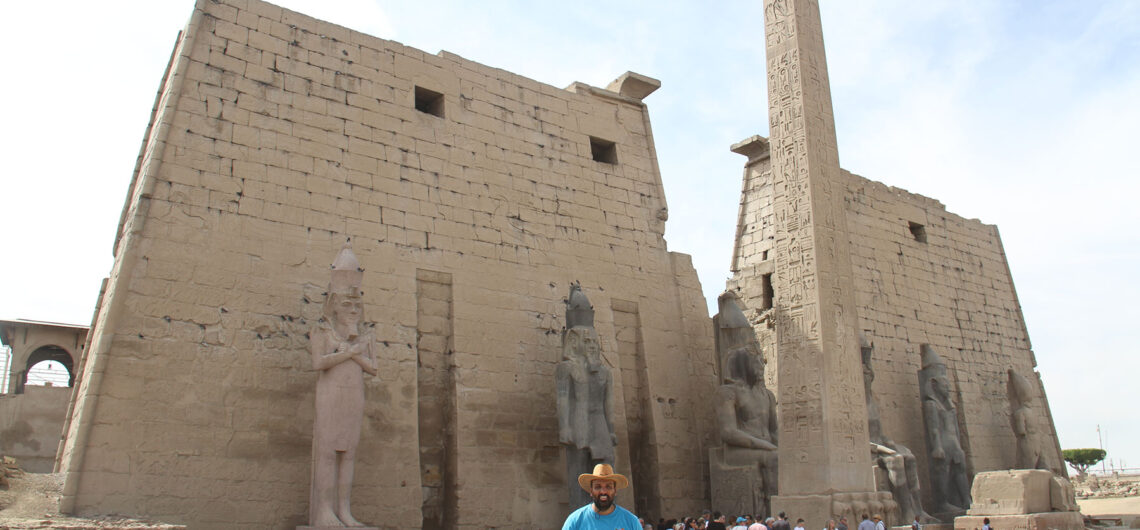
Worship of the god Amun and other deities at Luxor Temple
During ancient times, Luxor Temple was a place of great religious significance and served as a worship centre for various deities. One of the prominent gods worshipped at Luxor Temple was Amun, the king of the gods and the patron deity of Thebes. Amun was associated with air and wind, representing creativity, fertility, and rejuvenation. Worshippers believed that through their devotion to Amun, they could gain his favour and blessings.
In addition to Amun, Luxor Temple also housed several other important deities. The temple featured sanctuaries dedicated to the goddess Mut, Amun's consort, and their son Khonsu, the moon god. The presence of these deities highlights the importance of Luxor Temple as a religious and ceremonial site.
The worship of these gods took place through rituals and ceremonies performed by priests and worshippers. Food, drink, and other items were offered to the gods, and prayers and hymns were recited to honour and invoke their power. Luxor Temple was considered a sacred space where the divine and mortal realms intersected, allowing worshippers to connect with the gods and seek their divine guidance.
Today, visitors to Luxor Temple can still experience the ancient atmosphere and gain insight into the religious practices of the past. Exploring the temple and learning about the worship of Amun and other deities provides a deeper understanding of the spiritual beliefs and practices of the ancient Egyptians. It is a captivating experience that should not be missed when visiting Egypt.
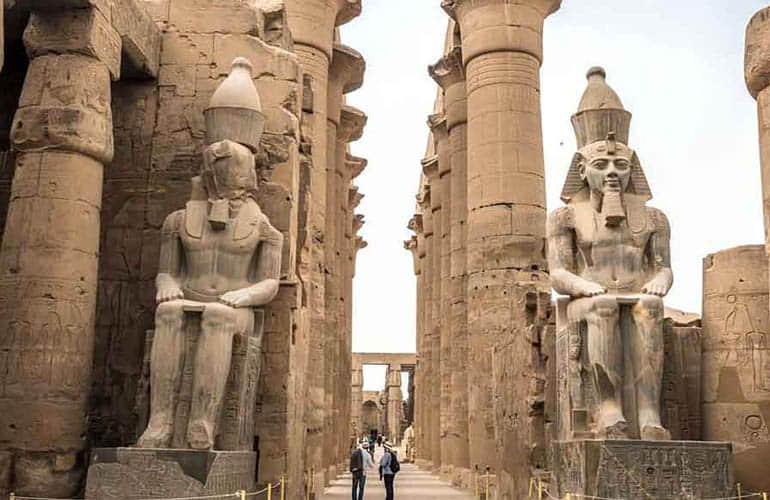
Rituals and festivals held at Luxor Temple
Rituals and festivals were an integral part of the religious and ceremonial life at Luxor Temple. The temple was dedicated to the Theban Triad, consisting of the god Amun, his wife Mut, and their son Khonsu. Various rituals were performed to appease the gods and ensure their continued protection and favour.
One important festival held at Luxor Temple was the Opet Festival. This annual event celebrated the divine marriage between Amun and Mut, representing the renewal of life and the fertility of the land. The festival spanned several weeks and involved elaborate processions, offering ceremonies, and performances by priests and musicians. It was a time for the community to unite and celebrate their faith.
Another significant ritual at Luxor Temple was the daily rituals performed by the priests. These included offerings of food, drink, and incense to the gods, as well as purification rituals and prayers. These rituals were believed to maintain the cosmic order and ensure the community's well-being.
Visitors to Luxor Temple can still experience the ambience of these ancient rituals and festivals through the well-preserved reliefs and inscriptions found throughout the temple. This provides a fascinating glimpse into the religious practices and beliefs of the ancient Egyptians.

Visiting Luxor Temple
Practical information and tips for visiting Luxor Temple
Practical Information and Tips for Visiting Luxor Temple
When planning a visit to Luxor Temple, it's important to consider the following information and tips to make the most of your experience:
-
Opening Hours: The temple is open from 6:00 am to 9:00 pm, allowing visitors to explore during the day or enjoy its beauty at night when it is illuminated.
-
Entrance Fees: Foreign visitors can purchase tickets for approximately 140 Egyptian pounds (around $9) at the entrance. Student discounts may be available with a valid student ID.
-
Guided Tours: Hiring a knowledgeable tour guide can greatly enhance your understanding of the temple's historical and cultural significance. They can help unravel the mysteries and stories behind the temple's intricate carvings and structures.
-
Dress Code: As Luxor Temple is an important religious site, it is advised to dress modestly and respectfully. It is recommended to wear comfortable shoes, as the temple grounds can be extended to explore.
-
Photography: Visitors are usually allowed to take photographs within the temple. However, checking for any specific restrictions during your visit is important.
-
Weather: Luxor experiences hot and dry weather, so be prepared with sunscreen, a hat, and plenty of water to stay hydrated.
-
Crowds: Luxor Temple can get crowded as one of Egypt's most popular tourist attractions. Visiting early in the morning or later in the afternoon is advisable to avoid peak hours.
By following these practical tips, visitors can fully immerse themselves in the historical significance and architectural wonders of Luxor Temple.

Nearby attractions and sites in Luxor to explore
While visiting Luxor Temple in Egypt, there are several nearby attractions and sites that travellers should explore:
-
Karnak Temple Complex: Located just north of Luxor Temple, the Karnak Temple Complex is one of the largest religious complexes in the world. It features many temples, chapels, pylons, and obelisks, offering a fascinating glimpse into ancient Egyptian religious practices.
-
Valley of the Kings: Situated on the west bank of the Nile, the Valley of the Kings is home to the tombs of many pharaohs, including the famous Tutankhamun. Visitors can explore the intricately decorated burial chambers and learn about the beliefs and rituals surrounding the afterlife.
-
Hatshepsut Temple: Also known as Deir el-Bahari, this stunning mortuary temple was built for Queen Hatshepsut and is a prime example of ancient Egyptian architecture. Its grand colonnades and terraces offer breathtaking views of the desert and the Nile.
-
Luxor Museum: For those interested in Egyptian art and history, the Luxor Museum is a must-visit. It houses a remarkable collection of artefacts, including statues, reliefs, and treasures from nearby temples and tombs.
-
Luxor West Bank: The west bank of Luxor is a treasure trove of archaeological sites, including the Tombs of the Nobles, Medinet Habu, and the Ramesseum. Exploring this area provides a deeper understanding of the ancient Egyptian civilization and its rulers.
When planning a trip to Luxor, including these nearby attractions in the itinerary ensures a comprehensive and enriching exploration of Egypt's rich history and cultural heritage.
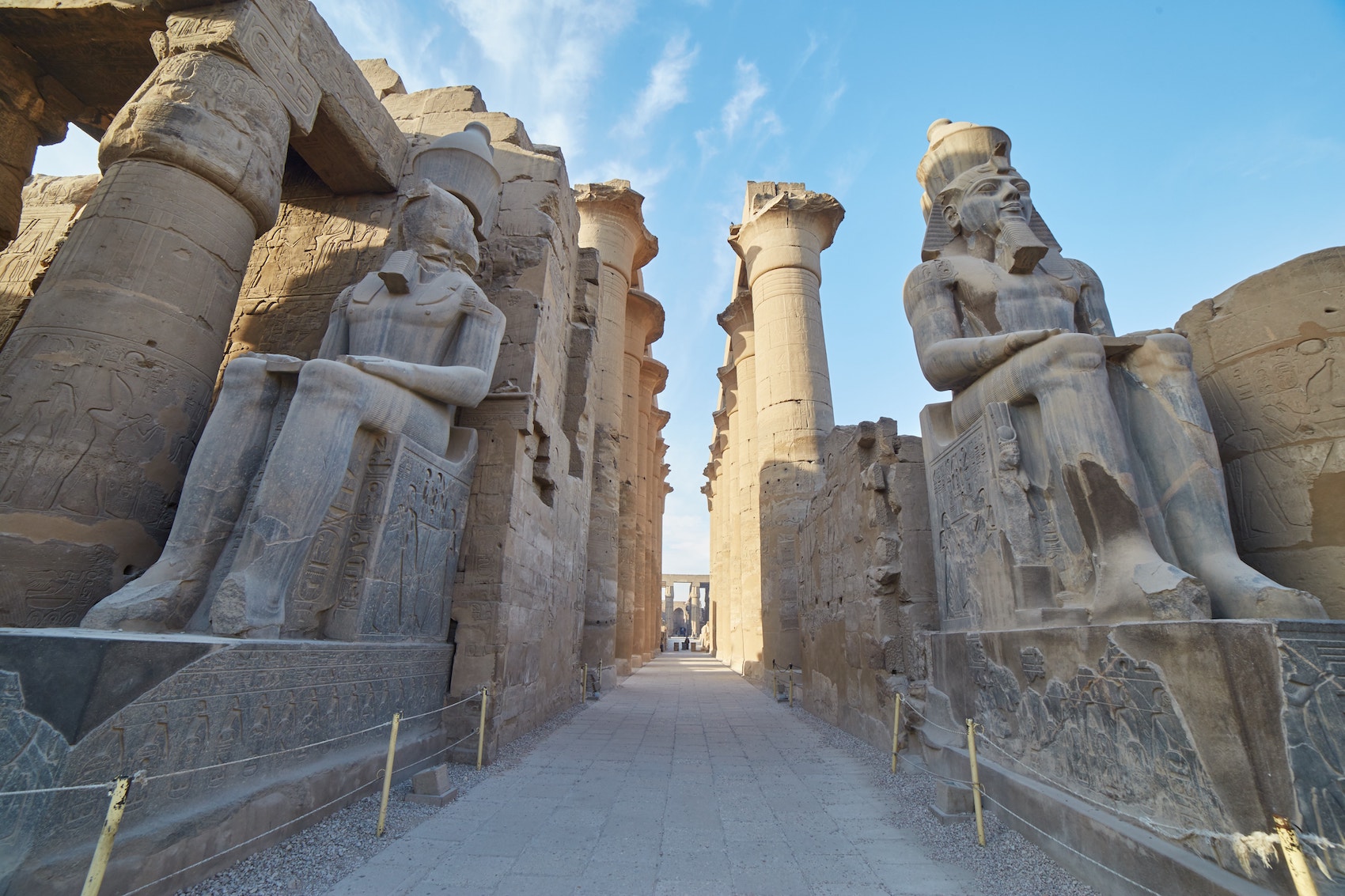
Recommended tour guides and resources for a comprehensive experience
If you're planning a visit to Luxor Temple in Egypt, hiring a knowledgeable tour guide is highly recommended to ensure a comprehensive experience. These guides have in-depth knowledge about the temple's history, architecture, and significance and can provide valuable insights and explanations during your visit. They can bring the stories and legends associated with Luxor Temple to life, making your visit more meaningful and engaging.
Several reputable tour guides and resources are available that specialize in Luxor Temple and the surrounding archaeological sites. Here are a few recommendations to consider:
-
Egypt Tours Plus: This company offers a variety of guided tours that include Luxor Temple as part of a larger itinerary. Their knowledgeable guides provide detailed explanations and make the visit informative and enjoyable.
-
Luxor West Bank Tours: This local tour operator offers personalized tours of Luxor Temple and other historical sites in Luxor. Their guides are passionate about Egypt's history and provide a personalized experience tailored to your interests.
-
Luxor Museum: Before visiting Luxor Temple, consider visiting the Luxor Museum, which provides a comprehensive overview of the temple's history and artefacts. The museum's exhibits provide context and enhance your understanding of Luxor Temple.
-
Travel Books: Several travel guidebooks are available that provide detailed information about Luxor Temple. Books such as "The Complete Temples of Ancient Egypt" by Richard H. Wilkinson and "Luxor" by Kent Weeks offer insights into Luxor Temple's history and significance.
By utilizing the services of a knowledgeable tour guide and exploring available resources, you can ensure a comprehensive and enriching experience when visiting Luxor Temple.

Encouragement for travellers to include Luxor Temple in their Egypt itinerary
If you plan a trip to Egypt, including Luxor Temple in your itinerary is an absolute must. This ancient temple is not only a testament to the architectural and artistic prowess of the ancient Egyptians, but it also offers a unique glimpse into the religious and ceremonial life of the time. From the grand entrance of the Avenue of Sphinxes to the towering Obelisk of Ramses II, every corner of Luxor Temple is filled with fascinating history and exquisite craftsmanship.
Visiting Luxor Temple allows you to immerse yourself in the rich cultural heritage of Egypt and journey back in time to the days of pharaohs and gods. Walking through the temple complex, you can't help but feel a sense of awe and wonder at the grandeur and beauty surrounding you.
Whether you're a history enthusiast, an architecture lover, or simply someone who appreciates the magnificence of ancient civilizations, Luxor Temple will undoubtedly leave an indelible impression. So make sure to include this must-see sight in your Egypt itinerary and prepare to be transported to a world of ancient wonders and mysteries.
